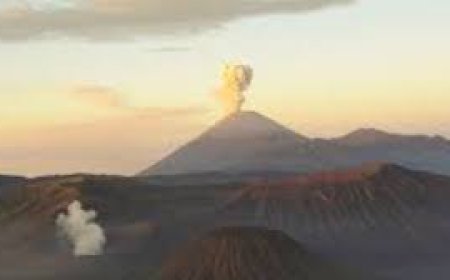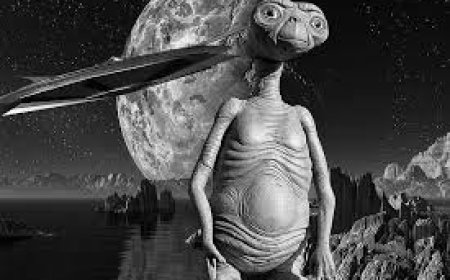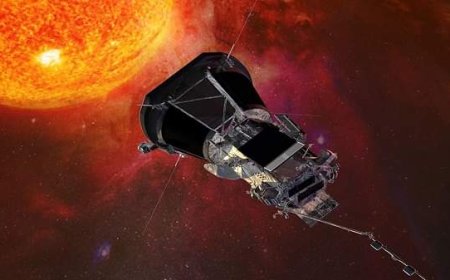The Intriguing Discovery of Organic Structures on Asteroid Ryugu: Insights into Life Beyond Earth
The quest to understand the origins of life has taken humanity beyond Earth's boundaries and into the vast reaches of space. Among the most exciting recent developments in this pursuit is the discovery of organic structures in samples retrieved from asteroid Ryugu by Japan's Hayabusa2 mission. This revelation has sparked widespread interest, as it hints at the possibility of extraterrestrial life's precursors while also emphasizing the challenges posed by Earth-based contamination in space exploration.

Asteroids: Guardians of the Solar System’s History
Asteroids are often called time capsules of the solar system. These rocky remnants from the early solar system offer glimpses into the conditions and materials that existed billions of years ago. Ryugu, a carbon-rich asteroid approximately 300 million kilometers from Earth, became the focal point of intense scientific interest when the Japan Aerospace Exploration Agency (JAXA) launched the Hayabusa2 mission in 2014.
The mission aimed to collect pristine samples from Ryugu's surface and subsurface, delivering them to Earth for detailed analysis. The success of this mission not only demonstrated advanced space exploration technology but also provided researchers with invaluable extraterrestrial material to analyze.
The Hayabusa2 Mission: A Technological Marvel
The Hayabusa2 spacecraft embarked on its journey to Ryugu equipped with cutting-edge instruments. Upon reaching the asteroid in 2018, it deployed multiple rovers and landers, capturing detailed images and data about Ryugu's surface. The spacecraft then used a small explosive to create an artificial crater, exposing the asteroid's subsurface, and collected samples from both the surface and this newly revealed layer.
In December 2020, the capsule containing these samples safely returned to Earth. For the first time, scientists had access to untouched material from an asteroid—a treasure trove for studying the origins of organic compounds.
Discovering Organic Structures on Ryugu
Initial analysis of Ryugu's samples revealed the presence of organic structures—molecules containing carbon, hydrogen, and oxygen. These compounds are the building blocks of life as we know it. The finding excited the scientific community, as it raised the possibility that the raw materials for life could exist beyond Earth.
The structures resembled microbial formations, but scientists cautioned against jumping to conclusions. The resemblance to life forms could have geological or chemical origins rather than biological ones. This uncertainty is central to the study of extraterrestrial samples.
Panspermia: Life’s Journey Through Space?
The discovery reignited interest in the panspermia hypothesis, which posits that life or its precursors may travel between planets and celestial bodies. If organic compounds like those found on Ryugu are widespread in the solar system, they could potentially seed life under favorable conditions.
Ryugu's organic materials might have formed in its parent body or been delivered via interactions with interstellar dust and ice. While this does not confirm extraterrestrial life, it demonstrates that the ingredients for life are not confined to Earth.
The Challenge of Contamination
One of the most significant obstacles in analyzing extraterrestrial samples is contamination. Despite meticulous precautions, microbes from Earth can infiltrate samples during collection, storage, or transport. In Ryugu's case, scientists are rigorously investigating whether the organic structures identified in the samples are native to the asteroid or contaminants from Earth.
This issue highlights the complexities of astrobiology. While space agencies work to minimize contamination risks, distinguishing between indigenous extraterrestrial materials and Earth-based intrusions remains an ongoing challenge.
Implications for Future Missions
The Ryugu findings have profound implications for future missions and the search for life beyond Earth. Missions like NASA's OSIRIS-REx, which recently returned samples from asteroid Bennu, aim to build on the successes of Hayabusa2. By analyzing materials from multiple asteroids, scientists hope to paint a clearer picture of the distribution and origins of organic compounds in the solar system.
Additionally, upcoming missions to icy moons like Europa and Enceladus—believed to harbor subsurface oceans—could further explore the potential for life in more hospitable environments.
Asteroids and the Origin of Life on Earth
The study of asteroids like Ryugu is not just about exploring outer space—it also informs our understanding of life on Earth. One prevailing theory suggests that asteroids and comets delivered essential organic compounds to the early Earth, kickstarting the processes that eventually led to life.
Ryugu’s organic structures could be similar to those that impacted Earth billions of years ago. By studying these materials, scientists can test hypotheses about how life's building blocks were distributed across the solar system.
The Bigger Picture: Are We Alone?
The discovery of organic structures on Ryugu adds another piece to the puzzle of life in the universe. While there is no direct evidence of extraterrestrial life, findings like these remind us of the vast possibilities that exist beyond our planet. The search for life is a slow, meticulous process requiring advanced technology, careful analysis, and a willingness to challenge assumptions.
Conclusion
The Hayabusa2 mission’s discovery of organic structures on asteroid Ryugu marks a significant milestone in space exploration and astrobiology. It demonstrates humanity's growing capability to retrieve and study materials from distant celestial bodies while addressing critical questions about life's origins.
Though the findings do not confirm extraterrestrial life, they provide compelling evidence that life's building blocks are not unique to Earth. As missions to asteroids, moons, and other planets continue, the dream of discovering life beyond Earth feels closer than ever. The journey of exploration, however, is as much about the questions we ask as the answers we seek, reminding us of the enduring mystery and wonder of the cosmos.


















































